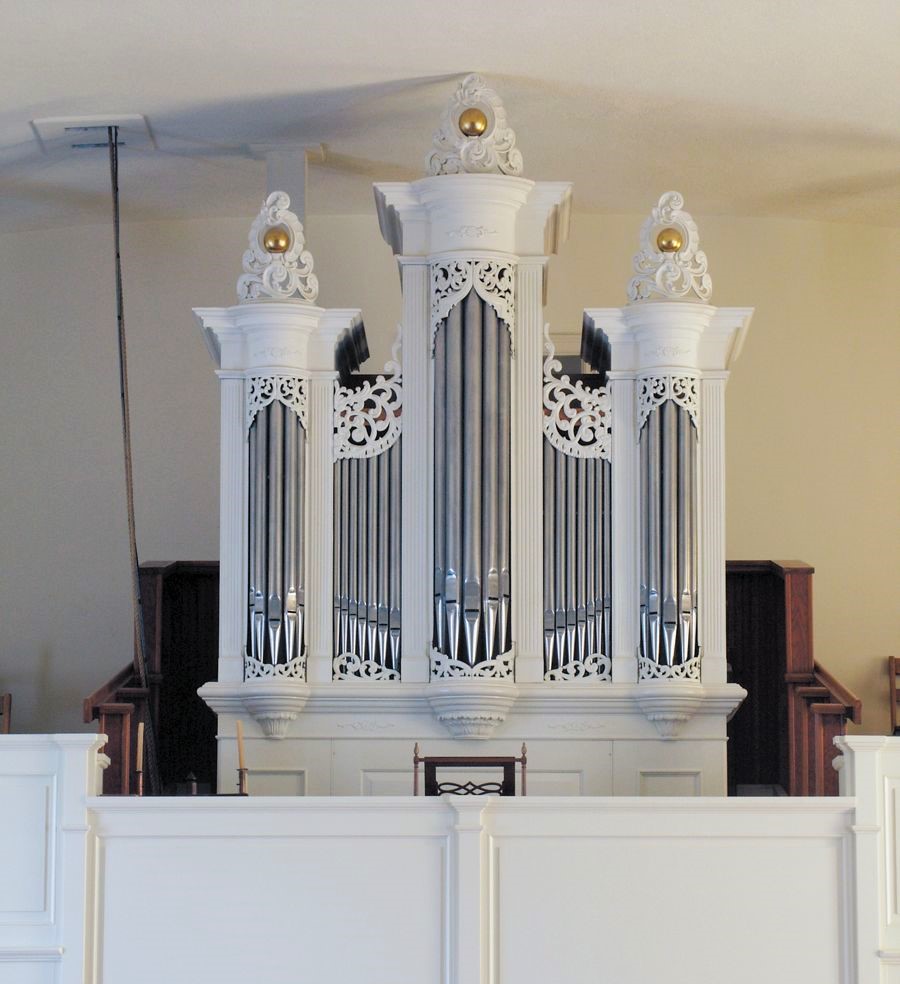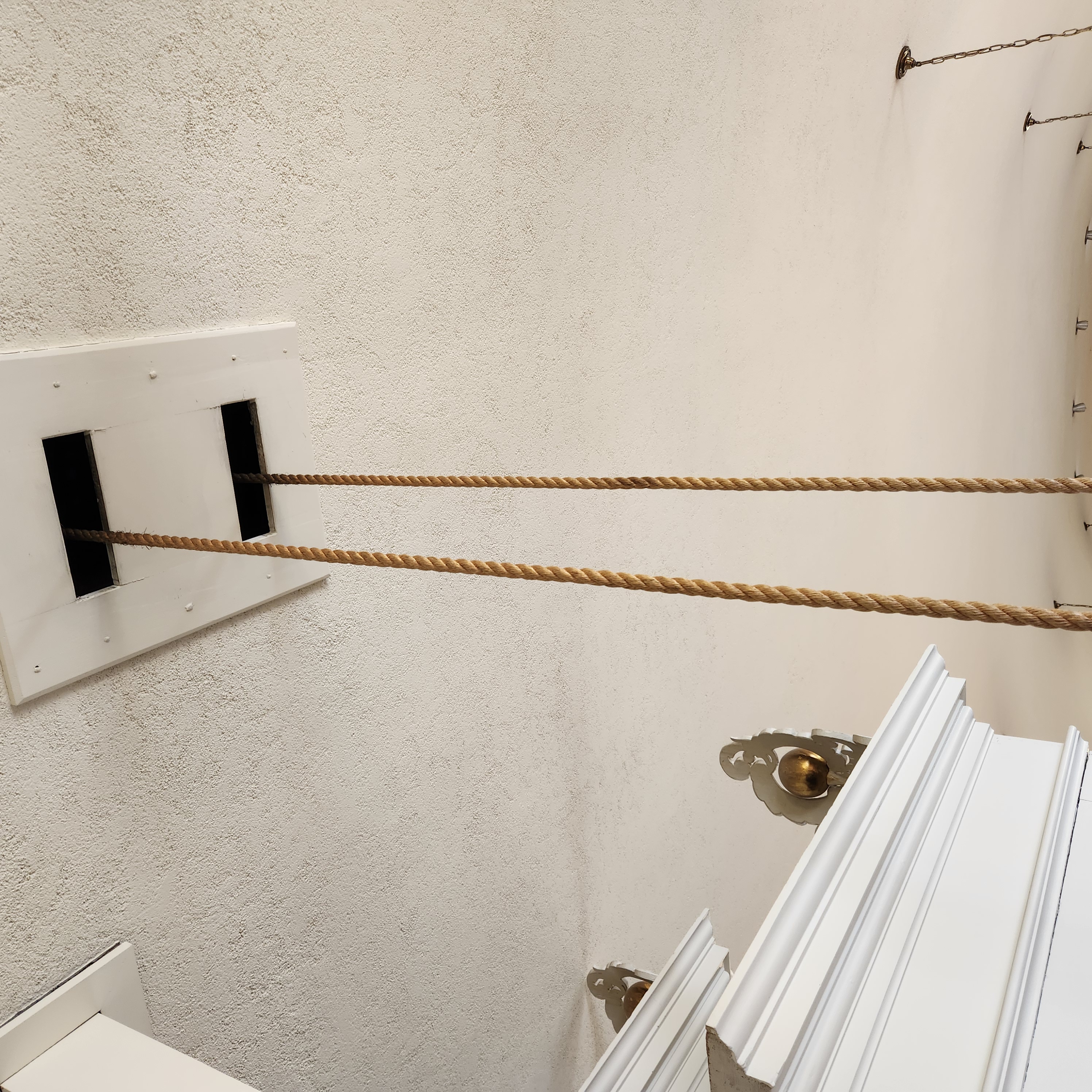Lititz, PA, Lititz Moravian Church
| Builder | D. Tannenberg |
|---|---|
| Year | 1787 |
| Period/Style | Classical |
| Stops | 9 |
| Keyboards | 1+P |
| Keyaction | tracker/mechanical |
The organ originally built for the Moravian Church in Lititz, Pennsylvania, has a storied history of movement, damage, and restoration. Initially constructed for the church in Lititz, it was moved to the Moravian Church in South Bethlehem in 1879 and later dismantled and stored partly in Lititz at the church and partly in the Single Brothers' House. A significant portion of the organ stored at the church was destroyed in a fire in 1957. The remaining parts underwent a meticulous restoration and reconstruction effort led by James R. McFarland & Co. from 1976 to 1983, with the aim to restore the organ to its original 1787 condition.
The comprehensive restoration process involved replicating all missing parts, including two wedge-shaped bellows, the pedal chest, various parts of the case, and the front pipes which had been stored in the church attic. McFarland's team relied on detailed documentation and adherence to Tannenberg's original construction methods to ensure historical accuracy. The restored organ was installed in a newly constructed gallery in the Single Brothers' House adjacent to the church, featuring an authentic wind system powered by pulling ropes—a traditional setup once common in Pennsylvania-German organs. Further adjustments and the setting of a new temperament were completed in 2010, securing the organ's place as a significant historical artifact and a functioning piece of musical heritage.
The comprehensive restoration process involved replicating all missing parts, including two wedge-shaped bellows, the pedal chest, various parts of the case, and the front pipes which had been stored in the church attic. McFarland's team relied on detailed documentation and adherence to Tannenberg's original construction methods to ensure historical accuracy. The restored organ was installed in a newly constructed gallery in the Single Brothers' House adjacent to the church, featuring an authentic wind system powered by pulling ropes—a traditional setup once common in Pennsylvania-German organs. Further adjustments and the setting of a new temperament were completed in 2010, securing the organ's place as a significant historical artifact and a functioning piece of musical heritage.
| Manual | Pedal |
|---|---|
| Principal Discant 8' | Sub: Bass 16' |
| Flaut Amabile 8' | Octav Bass 8' |
| Viol de Gambe 8' | |
| Qünt: Dehn 8' | |
| Principal 4' | |
| Floth 4' | |
| Sub Octav 2' |
No Video/Audio samples available.
https://beta.pipeorgandatabase.org/instruments/375
 Pipe Organ Map
Pipe Organ Map
